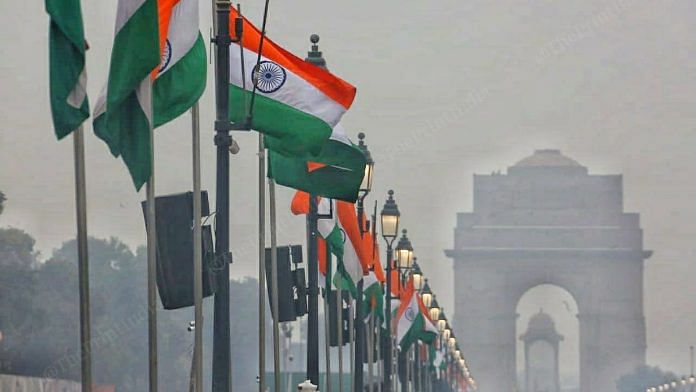Thank you dear subscribers, we are overwhelmed with your response.
Your Turn is a unique section from ThePrint featuring points of view from its subscribers. If you are a subscriber, have a point of view, please send it to us. If not, do subscribe here: https://theprint.in/subscribe/
Treatment without repercussions – the West is turning towards holistic methods of wellness routines to avoid the numerous side effects that come with modern medicine. Ironically, what has emerged as a global “trend” in recent years is a lifestyle that has been integral to India for centuries.
Yet, these ancient Indian practices have morphed into billion-dollar industries mostly driven by Western entrepreneurs. While the US, Europe, and even China have mastered the art of monetizing these Indigenous Knowledge Systems (IKS), India remains largely a supplier rather than the custodian and leader of its own cultural heritage.
The commodification of Ancient Indian Wellness Sciences
Branches of ancient Indian sciences, such as Yoga, Meditation, Ayurveda and Sound Therapy that represented simple living are now being rebranded and commodified as “luxurious retreats” and “high-end” alternatives curated for the upper class.
Across major cities in the United States and Europe, the wellness scene has taken on a life of its own. Charming yoga studios, upscale Ayurvedic spas, and cozy meditation retreats – all at costs that put them out of reach for most.
Even traditional Indian products are getting a luxury makeover. Turmeric, or haldi as it’s known back home, is now hailed as a “superfood” and sold at much higher margins than ever before. Similarly, ashwagandha has become a go-to supplement among fitness enthusiasts, finding its way into the daily routines of gym-goers worldwide.
Herbal teas, once everyday staples in Indian households, have also been elevated in the West, with consumers eager to embrace what they see as exotic wellness products.
Transforming spiritual knowledge into products for mass consumption
Celebrity-endorsed brands, such as Gwyneth Paltrow’s “Goop” have relied heavily on wellness products and treatments inspired by Ayurveda. By marketing these products as luxury commodities, these brands are not only profiting enormously but also redefining wellness for global mass consumption.
Elite resorts in California, Thailand, and private islands now offer age-old Indian therapies such as Shirodhara (an ayurvedic practice where a steady stream of warm oil is gently poured onto the forehead, specifically targeting the ‘third eye’ area) and Abhyanga (ayurvedic full-body oil massage) amongst others. These holistic Indian therapies are now exclusive wellness experiences sold at premium prices, promising rejuvenation and natural healing. These businesses invest heavily in branding, quality control, and the consumer experience – elements that are currently underdeveloped in India’s own commercialization efforts.
Adding to the complexity, China has also been leveraging its own rich history of traditional medicine while selectively incorporating elements of Ayurveda to cater to a broader Asian and Western audience. The runaway success of these global players lays bare the stark contrast. While they master the market, India remains on the sidelines, struggling to claim its own legacy.
India: A Supplier, not a Leader
Despite being the birthplace of these time-honored practices, India has struggled to capture the full economic benefits of its cultural exports. Several factors contribute to this imbalance:
- Lack of Branding and Value Addition:
While international brands have built a billion-dollar industry around India’s ancient sciences, India still treats its traditional knowledge as a public good, rather than an economic asset. Only a handful of brands capitalize on it, but most fall short due to weak branding, ineffective marketing, and subpar services. This keeps India confined to being a raw material supplier.
- Regulatory and Intellectual Property Challenges:
Without strong regulations, India’s traditional knowledge remains vulnerable to misuse. While efforts like the Traditional Knowledge Digital Library (TKDL) help, they are insufficient on their own. To truly benefit, we need solid intellectual property laws that not only protect but also promote its heritage.
- Fragmented Industry and Inadequate Infrastructure:
The holistic wellness sectors in India are scattered. Small-scale practitioners and businesses lack the capital or expertise to scale and expand their operations. Hence, a strong national brand that can compete globally seems a far-fetched dream. Poor research, weak quality control, and lack of certification further slow down its growth.
Policy Reforms: Taking back ownership of India’s wellness legacy
For India to reclaim its place as the global leader in holistic wellness, strategic reforms are necessary:
- Strengthening Intellectual Property Protection: India must enforce stronger IPR laws and expand initiatives like TKDL to prevent its traditional knowledge from being repackaged and profited off elsewhere.
- Building a Strong National Brand: A unified branding strategy for Ayurveda, yoga, and other traditional sciences backed by quality certification and compelling marketing can position Indian wellness products as premium offerings, not just raw materials.
- Investing in Research and Infrastructure: Dedicated R&D centers and certification bodies must be established to enhance product credibility, paving the way for Indian brands to meet global standards.
- Strengthening Global Trade Policies: India should actively negotiate diplomatic trade agreements that safeguard its traditional knowledge while ensuring fair economic returns.
These pieces are being published as they have been received – they have not been edited/fact-checked by ThePrint.


